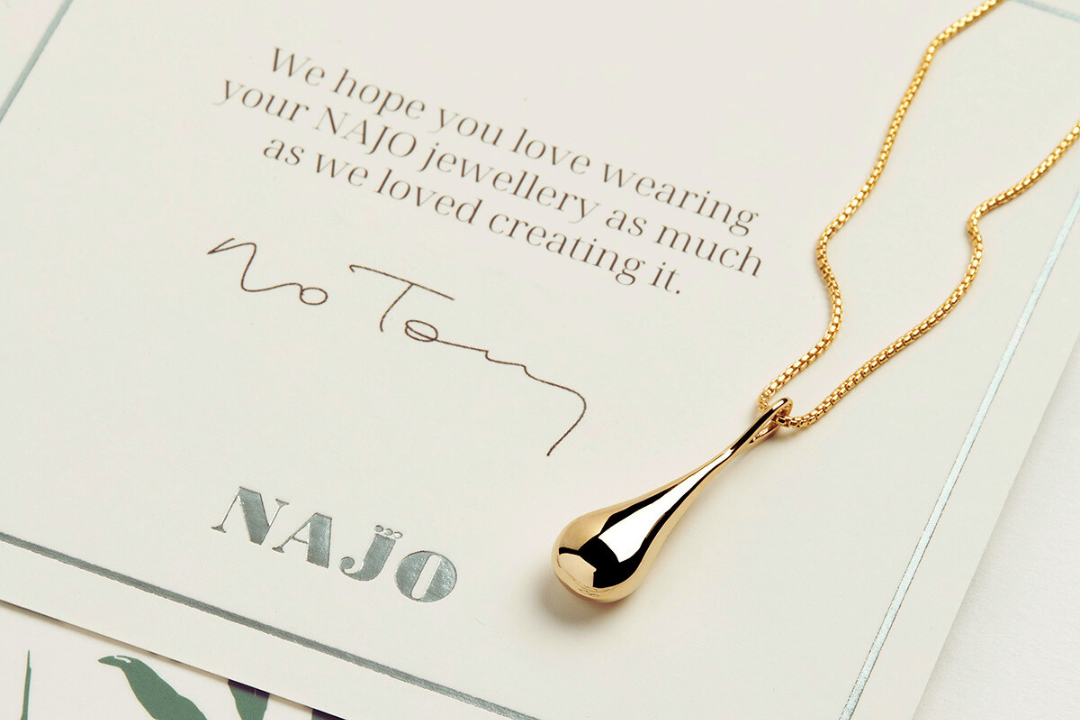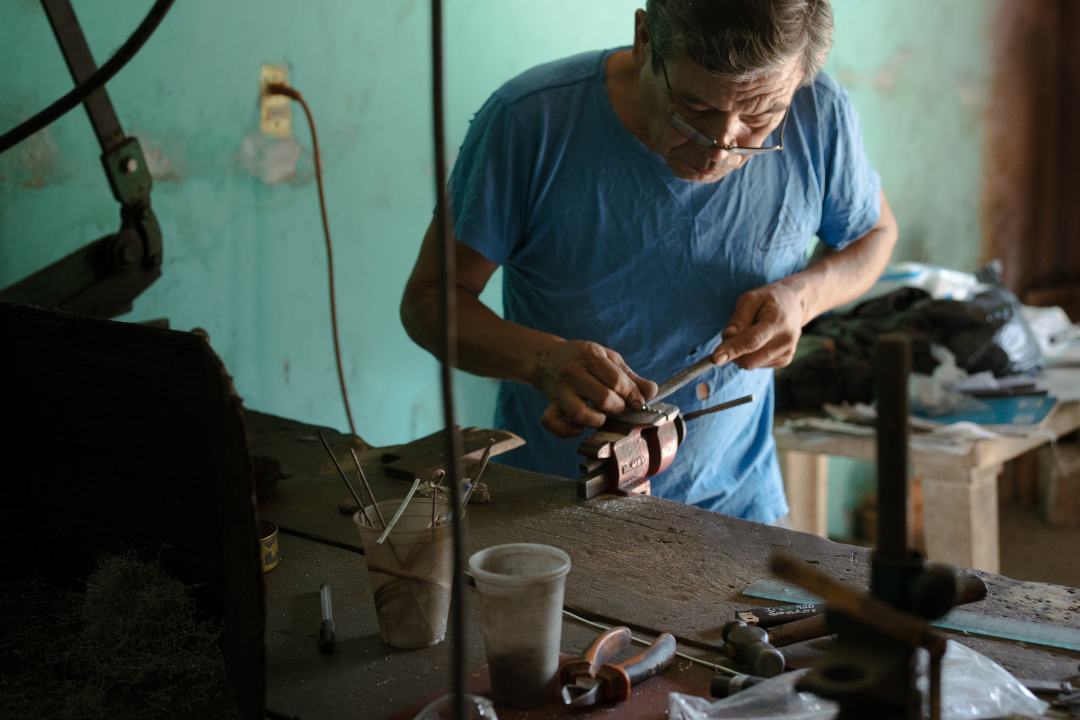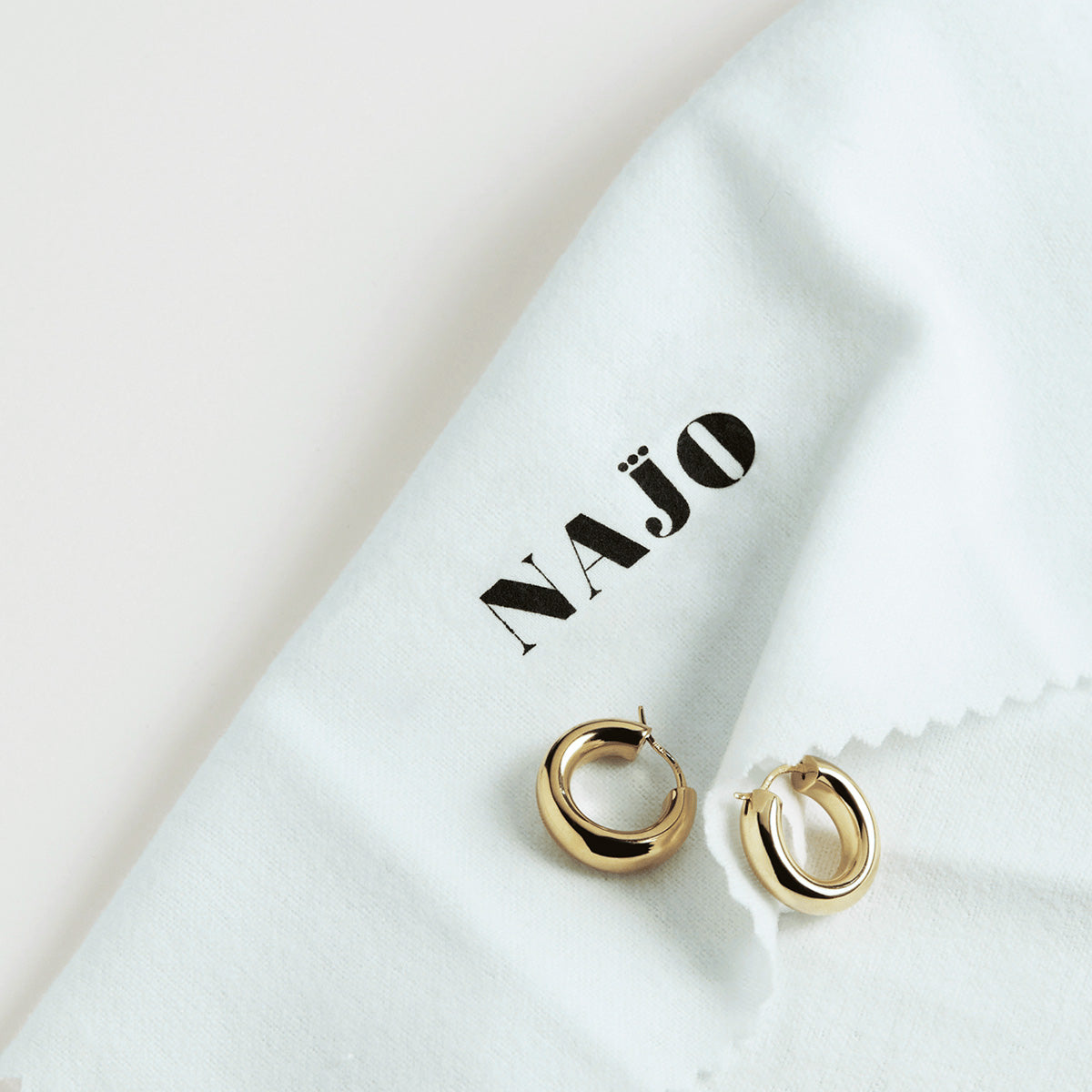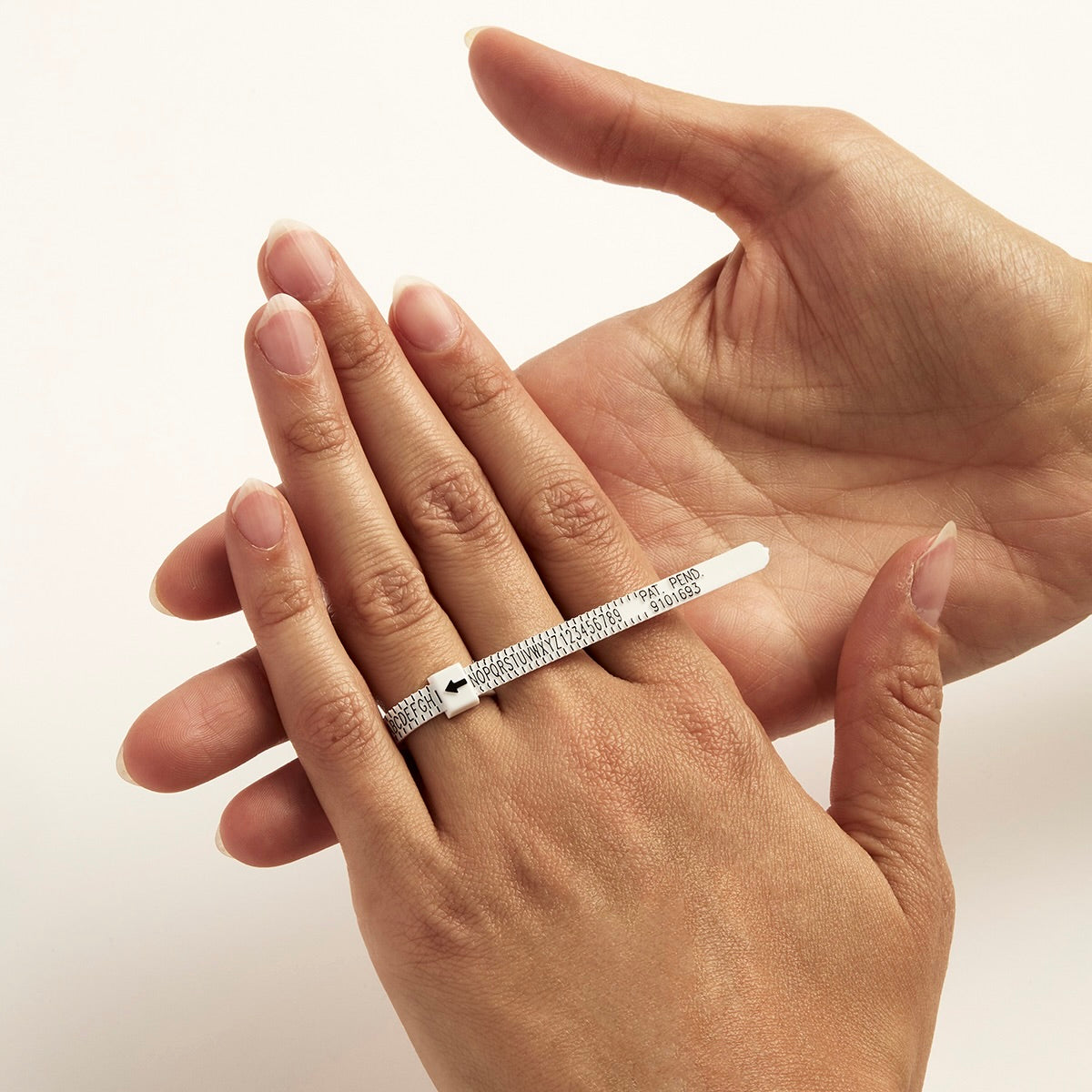Silver, known for its radiant sheen and timeless beauty, requires a special touch to keep it looking its best. This guide is your clear, uncluttered path to maintaining the elegance and beauty of your sterling silver jewellery. If you’ve ever wondered ‘how to clean sterling silver jewellery’, read on to learn how to ensure your treasured pieces remain as captivating as they were on the first day.

Composition and Properties of Sterling Silver
Sterling silver, an alloy composed predominantly of silver — typically about 92.5% — combined with other metals such as copper, boasts both beauty and durability. This blend enhances the metal’s strength without compromising its illustrious sheen, making it a favoured material for jewellery.
Its unique properties include a high degree of malleability and ductility, allowing for intricate designs and shapes. The inherent lustre of sterling silver gives it an elegant, reflective quality, making it a timeless choice for fine jewellery.

Common Issues with Sterling Silver (Tarnishing, etc.)
Despite its durability, sterling silver is prone to tarnishing, a natural and common reaction when the silver surface interacts with sulphur-containing substances in the air or on the skin. This tarnishing manifests as a gradual discoloration of the metal, often resulting in a yellowish or black patina.
Factors like humidity, air pollution, and contact with chemicals found in cosmetics, hairspray, and even some foods can accelerate this process. Without proper care and cleaning, sterling silver jewellery can lose its lustrous appeal over time.
Preparing To Clean Your Sterling Silver Jewellery

Identifying When Cleaning is Needed
Recognising when your sterling silver jewellery requires cleaning is key to preserving its lustre and longevity. Signs to look for include dullness, discoloration, or a loss of shine, indicating tarnish formation. If your jewellery starts to look cloudy or has black or yellowish spots, it's time for a clean.
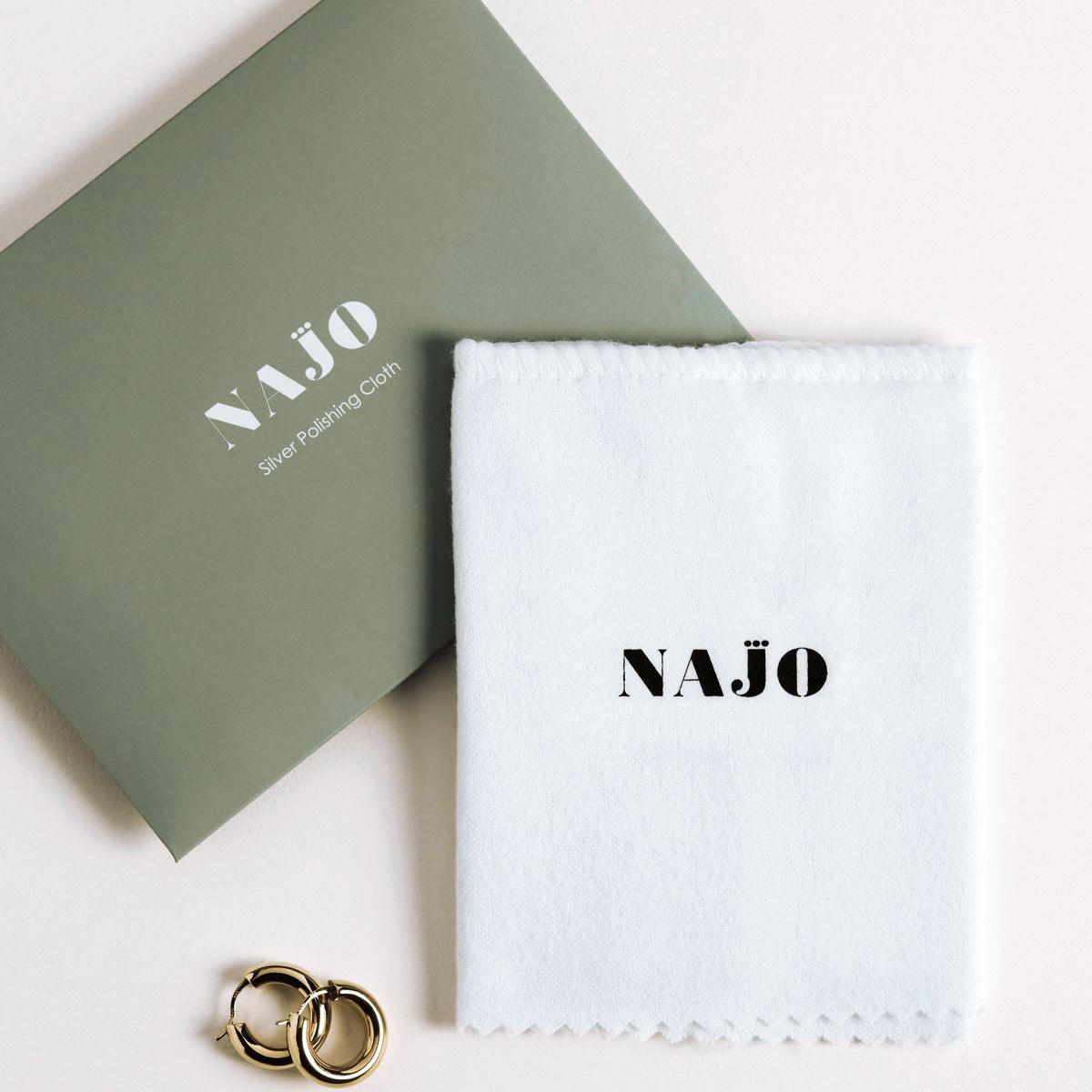
Safety Tips and Precautions
Safety is paramount when cleaning sterling silver. Always work in a well-ventilated area if using chemical cleaners and avoid inhaling fumes. Wear gloves to protect your skin from potential irritation, and avoid abrasive materials or tools that could scratch the silver.
Be extra cautious if your jewellery includes gemstones or delicate designs, as some cleaning methods may not be suitable for them. Remember, gentle handling is essential – rigorous scrubbing can damage the silver's surface. By taking these precautions, you ensure not only the safety of your jewellery but also your own, allowing your sterling silver to shine safely and beautifully.
Drying and Polishing Your Sterling Silver Jewellery

Techniques for Effective Drying
After cleaning, the way you dry your sterling silver jewellery is crucial to prevent water spots and additional tarnishing. Begin by gently patting the jewellery dry with a clean, soft, and lint-free cloth.
This method is preferable over air drying, which can leave water marks. Be cautious not to use paper towels or rough fabrics, as these can scratch the delicate surface of the silver. For intricately designed pieces, use a hairdryer on a cool, gentle setting to ensure all moisture is removed from tiny crevices and joints.
Polishing Tips for Added Shine
Polishing your sterling silver jewellery not only restores its shine but also removes any lingering tarnish. Use a specialised silver polishing cloth designed for this purpose, which usually contains a silver cleaner and an anti-tarnishing agent.
Gently rub the jewellery with the cloth using back-and-forth motions to avoid circular patterns, which can highlight scratches. For items with intricate designs, employing a soft-bristled brush or a Q-tip can help reach small details. If you prefer a natural approach, a clean microfiber cloth can effectively polish the silver. It’s essential to be gentle and patient during this process, as vigorous polishing can wear down the silver over time.
Embrace Nature's Elegance with NAJO Sterling Silver jewellery
Whether you're drawn to the elegance of classic styles or the boldness of contemporary designs, NAJO's selection of sterling silver jewellery promises unmatched quality and artistic expression.
Experience the blend of luxury and natural elegance across NAJO’s silver rings, silver earrings,silver necklaces and silver bracelets where each piece is a celebration of nature's beauty. Should you have any questions about our pieces, please feel free to contact us.
FAQs
How do you clean sterling silver jewellery at home?
Several common household items can effectively clean sterling silver. An accessible option is mild dish soap. Mix with warm water to create a soapy solution. Soak the silver, gently scrub with a soft cloth, then rinse and dry.
Always use a soft cloth to prevent scratching the silver and rinse thoroughly after cleaning. Be cautious with antique or fragile pieces, and avoid harsh chemicals or abrasive materials. For items with intricate designs or precious stones, consider consulting a professional.
What's the best way to clean sterling silver?
To effectively clean sterling silver, you can use gentle methods at home. A mild soap-and-water solution works for lightly tarnished items, while a baking soda paste is better for heavier tarnish. For quick touch-ups, specially treated silver polishing cloths are ideal.
Commercial silver dip cleaners are also an option but should be used with caution. It's important to clean silver regularly to prevent tarnish buildup and to store it in a dry place. For valuable or intricate pieces, professional cleaning may be advisable. Avoid using abrasive materials like toothpaste or steel wool.
What should you avoid cleaning sterling silver jewellery with?
When cleaning silver jewellery, it's important to avoid certain substances and methods that can be too harsh and cause damage. Here are things you should not use:
- Toothpaste: Often cited as a DIY cleaner, toothpaste can be too abrasive for silver and may scratch the surface.
- Chlorine and Bleach: These harsh chemicals can damage silver, leading to permanent discoloration and deterioration.
- Harsh Detergents: Strong cleaning agents can strip away the finish and patina of silver.
- Baking Soda or Salt with Aluminum Foil for Delicate or Antique Silver: While effective for some items, this method can be too harsh for delicate or antique pieces with a high silver content.
- Steel Wool or Abrasive Brushes: These can scratch the surface of silver.
- Oven Cleaners and Other Harsh Chemicals: These products are too aggressive and can cause irreparable damage to silver jewellery.
It's always safer to stick to gentle cleaning methods, such as a soft cloth with a mild soap and water solution. For more valuable or sentimental pieces, professional cleaning is recommended to avoid accidental damage.













